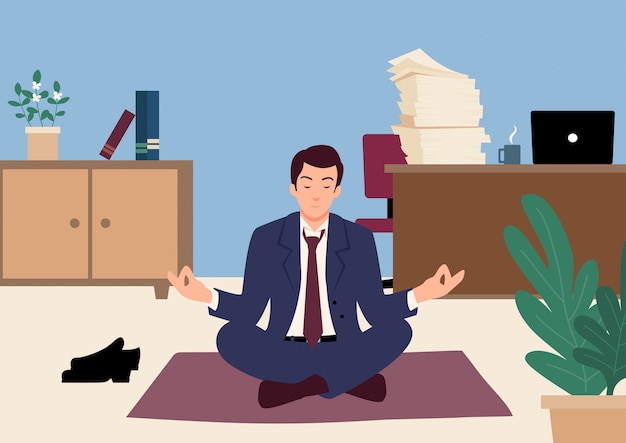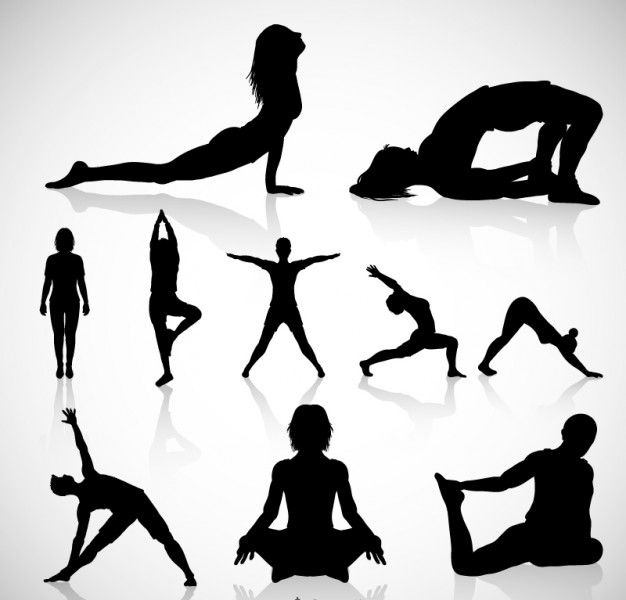


This is an energizing breathing movement that consists of three sharp inhalations through the nose followed by one deep exhalation through the mouth. For each of these poses, keep the tip of your tongue gently touching the small ridge behind your front top two teeth to help relax your face, neck, and jaw. Adapt the poses to your body rather than pushing yourself into the “perfect pose.” Remember that yoga is about deepening the conversation between your mind and body, so listen to the messages your body sends you as you move through the sequence. Explore each pose mindfully without forcing your body into any position that doesn’t feel appropriate.

The poses that follow form a simple chair yoga routine that will give you an energy boost when you find yourself in the mid-day doldrums. It’s a convenient and handy way to integrate yoga into your day and the perfect antidote to the fatigue you may run into as your energy begins to wane. In as little as 5 to 7 minutes, you can perform a handful of poses that will stimulate your circulation, boost your metabolism, lengthen your muscles, deepen your breathing, and fill you up with a surplus of life force energy ( Prana). Does this sound familiar? If so, what can you do to recharge your batteries to make it through the remainder of the day?Ĭhair yoga is an ideal way to invigorate your mind and body from the comfort of your office or desk chairs. The mid-afternoon slump ambushes you and suddenly you’re in a battle with your eyelids to stay awake. Other work-friendly yoga poses include spinal twists, (which can be done seated or standing) eagle arms (great for stretching out wrists and shoulders), and mountain pose (for resetting your posture, boosting energy, and improving focus).It’s 3:30 in the afternoon, you’ve had a busy day, and your energy reserves are running low. These can be done standing or seated in a chair: Keep your back straight, lift your arms overhead, interlace fingers and press palms toward the ceiling, and bend gently to right and then to the left. To stretch a bit at work, McGee recommends side bends to help prevent back soreness and stiffness. “It’s a great tool for avoiding knee-jerk reactions, and having better control over the situation.” “That oxygenating breath helps clear the mind and reminds you that you’re in charge of your breath and your body,” McGee says. Research has shown that slowing down and deepening breath can have real effects on wellbeing, including controlling blood pressure and improving heart rate. McGee encourages people in all types of jobs to incorporate a bit of mindfulness into their workday, even if it’s just a simple breathing exercise.
#Office yoga icon manual
Mind-body techniques like yoga can help counteract some of that stress and some of the physical demands of work, whether from hard manual labor or sitting hunched over at a computer, McGee says. “Having any type of job nowadays is so stressful because of the long hours we spend working,” says McGee (who was not involved in the study). Kristin McGee, a yoga instructor in New York City and author of the upcoming book Chair Yoga, says that mindfulness techniques are important for managing workplace pressures, no matter what that workplace is. Yoga and meditation are likely more popular because they’ve received much attention in the general public over the past two decades, the authors point out.Īs a whole, mindfulness practices can “address multiple workplace wellness needs, benefiting both employees and employers,” the study authors say. The new study also looked at the prevalence of two other mindfulness practices-tai chi and qigong-but did not find a substantial change in these rates over time. (The study authors were unable to find any mindfulness studies that had specifically focused on blue-collar or farm workers.) Mindfulness training has been shown to reduce burnout and mood disturbances in health care providers, and to improve sleep quality among teachers. In previous research, these types of workplace interventions have been associated with a host of benefits for employees. Men and socioeconomically disadvantaged groups within these occupations are the least likely to do them. Institutional obstacles, such as lack of funding, lack of time or personal beliefs, “should be addressed to make these practices available to all workers,” they wrote. The authors say that employers in these occupations could benefit by identifying workers who do practice mindfulness techniques, and involve them in planning and promoting these activities for other employees.


 0 kommentar(er)
0 kommentar(er)
